Have you ever opened your pantry and found two unlabeled jars (or bags) of white powdery flour, wondering “Wait… which one is the rice flour and which one is glutinous rice flour?” Don’t worry, you’re not alone! These two flours look almost identical, but they behave very differently in cooking. One makes soft, chewy delights like sticky dumplings and mochi, while the other is perfect for and light, airy cakes and crispy batters.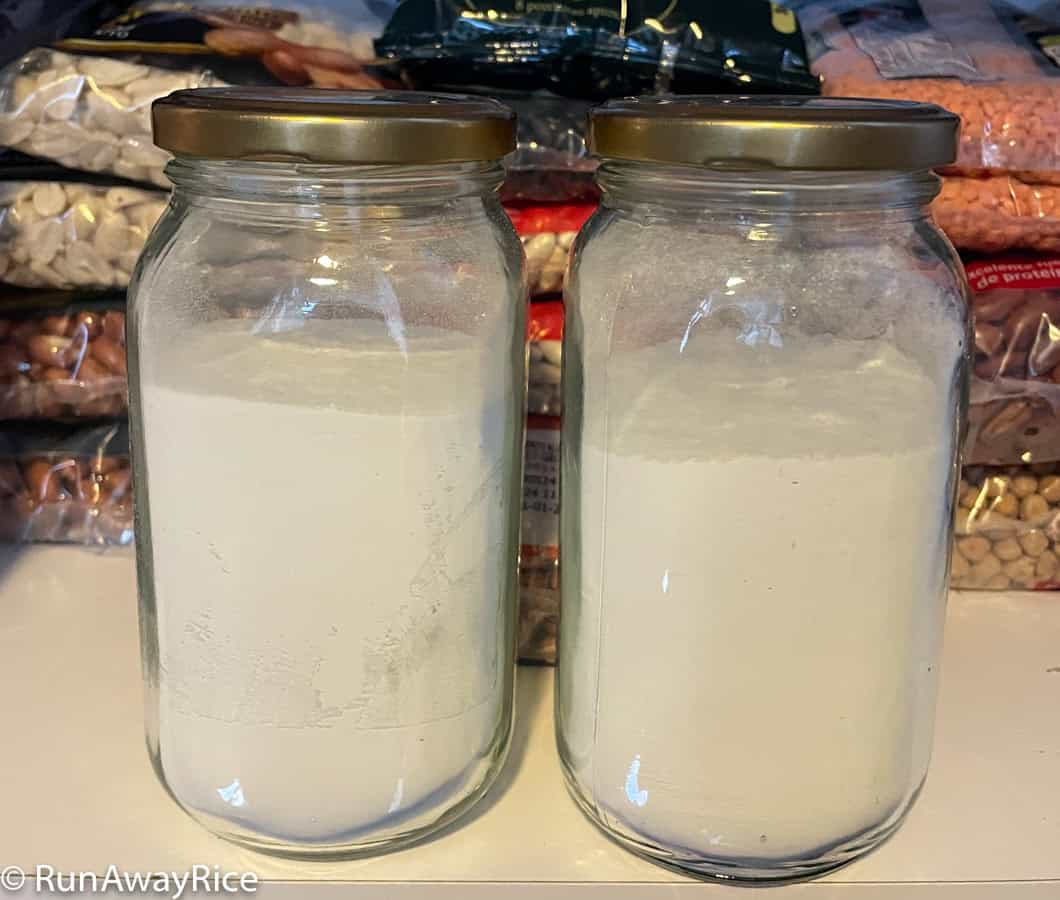
In my previous post, Rice Flour vs. Glutinous Rice Flour – What Are the Differences?, I explained how these two flours come from different types of rice and why they’re not interchangeable. Today, let’s have some fun kitchen science! I’ll show you a quick and easy way to tell them apart using just water and a microwave.
The Mystery of the Two Flours
If you’ve ever bought rice flour and glutinous rice flour in bulk, you know the packaging can be nearly identical, and once they’re poured into jars or other containers, it’s impossible to tell which is which by sight alone. Both are soft, white, and powdery, but the real difference only shows up when you add water and heat. So what do you do if you’re standing in your kitchen with two mystery bags? You experiment! 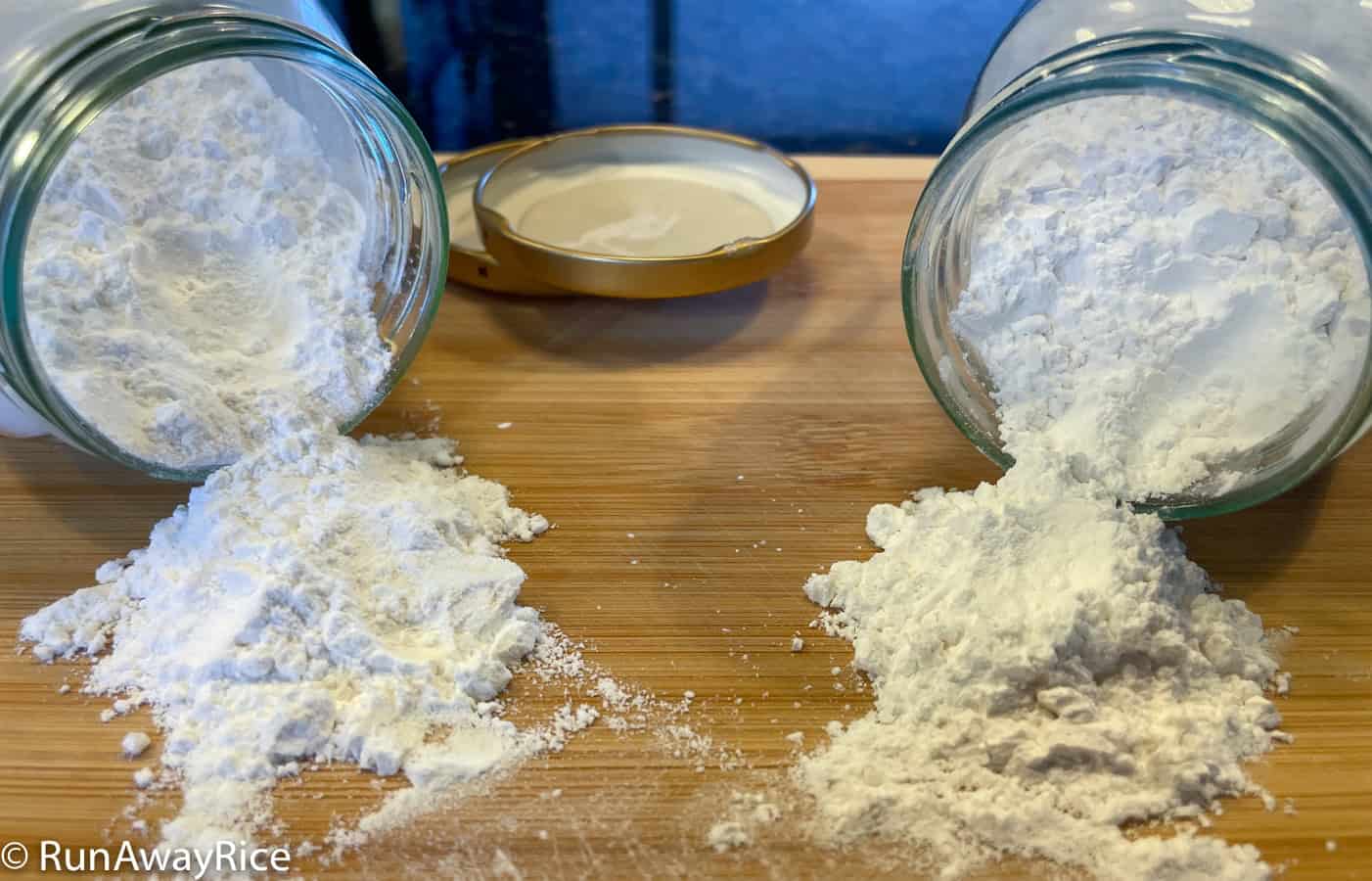
The Kitchen Science Test
Here’s a simple, foolproof test that you can do in just a few minutes. Grab two small bowls, a little water and your inner kitchen scientist!
What You’ll Need
- 1 teaspoon of each flour
- 2 teaspoons of water for each
- two small microwave-safe bowls
- spoons for stirring
The Steps
1. In the first bowl, mix 1 teaspoon of flour with 2 teaspoons of water until smooth.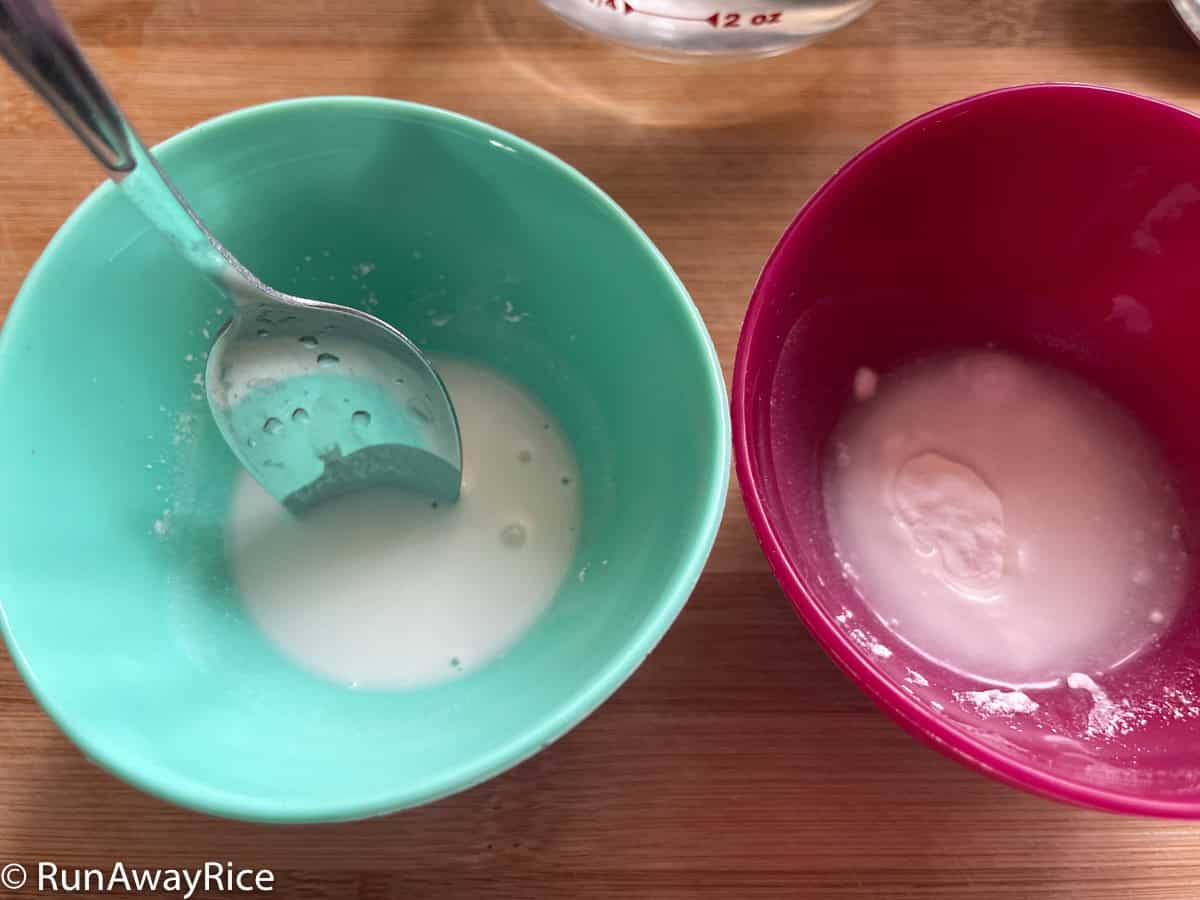
2. Repeat with the second flour in another bowl.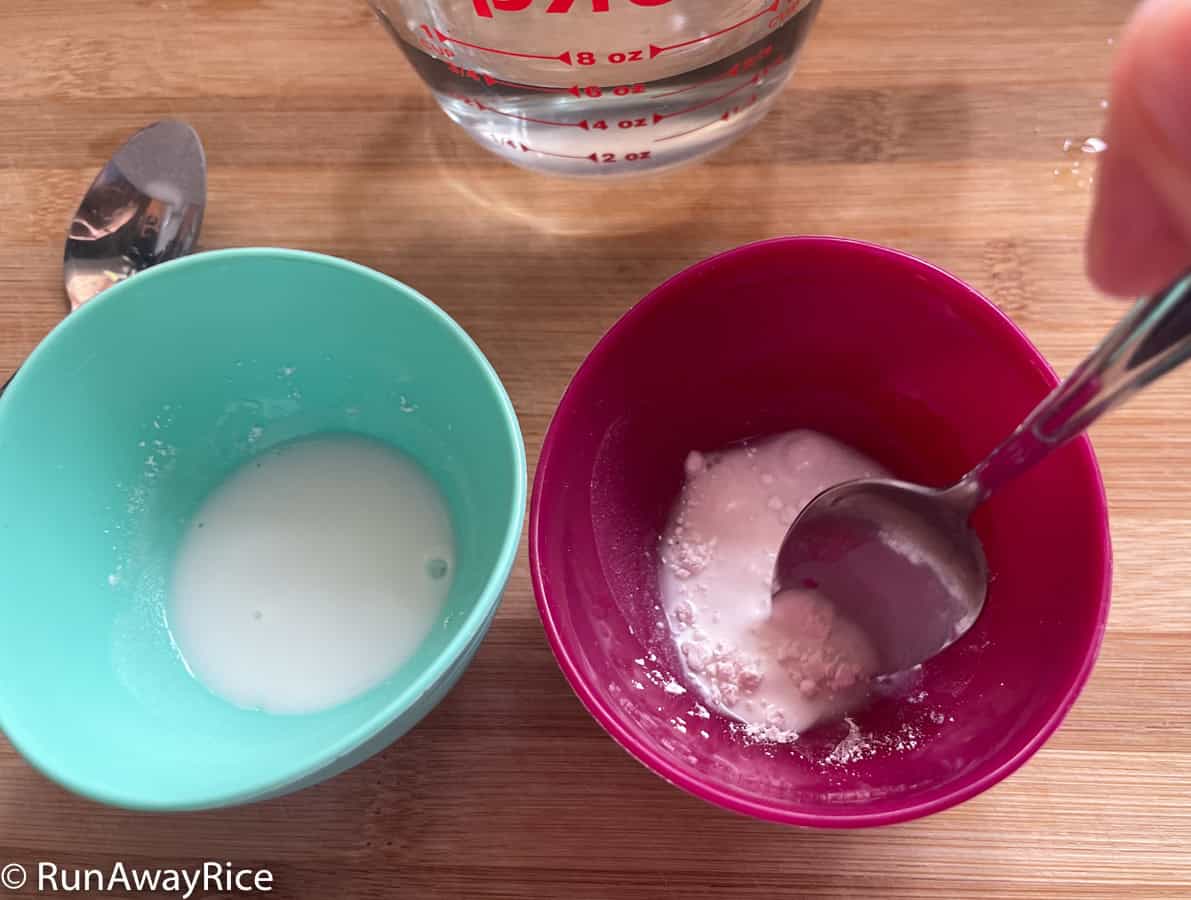
3. Microwave both bowls for 30 seconds.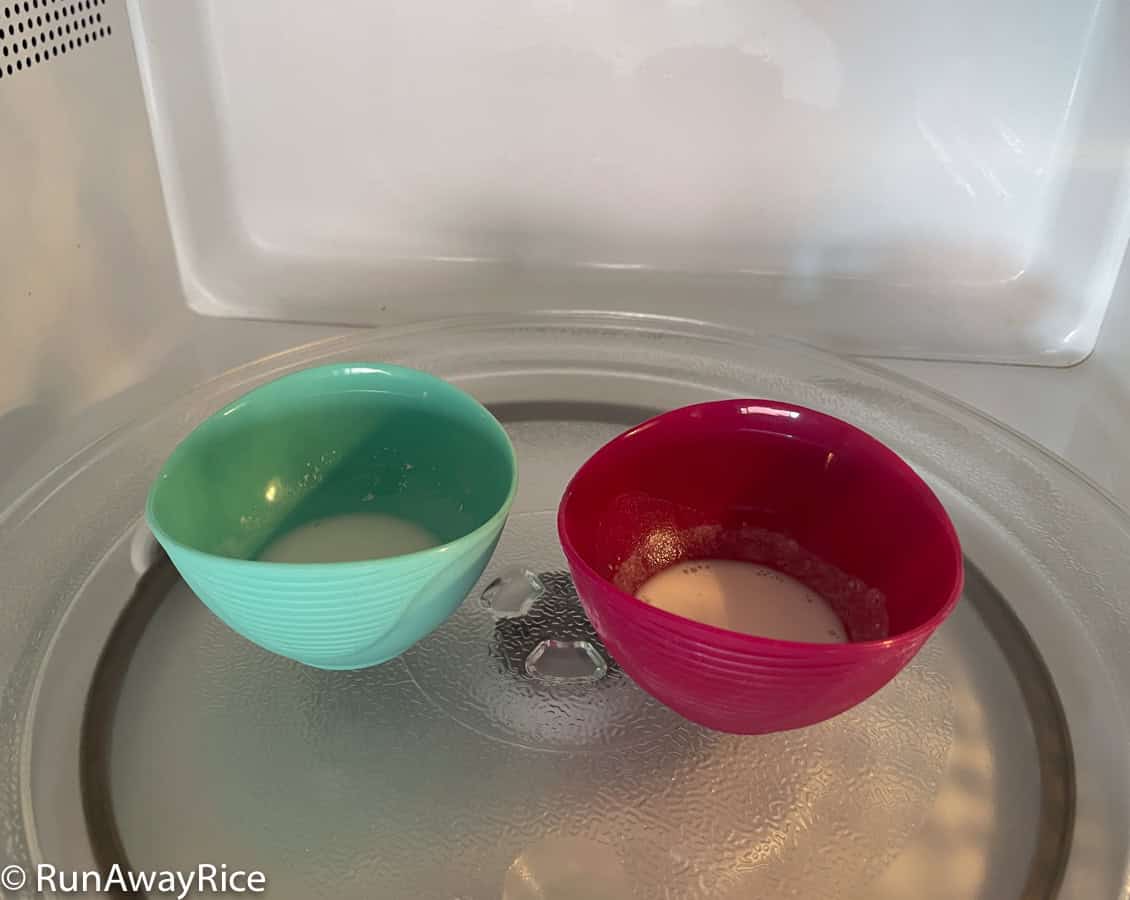
4. Carefully take them out (they’ll be warm) and check out the results.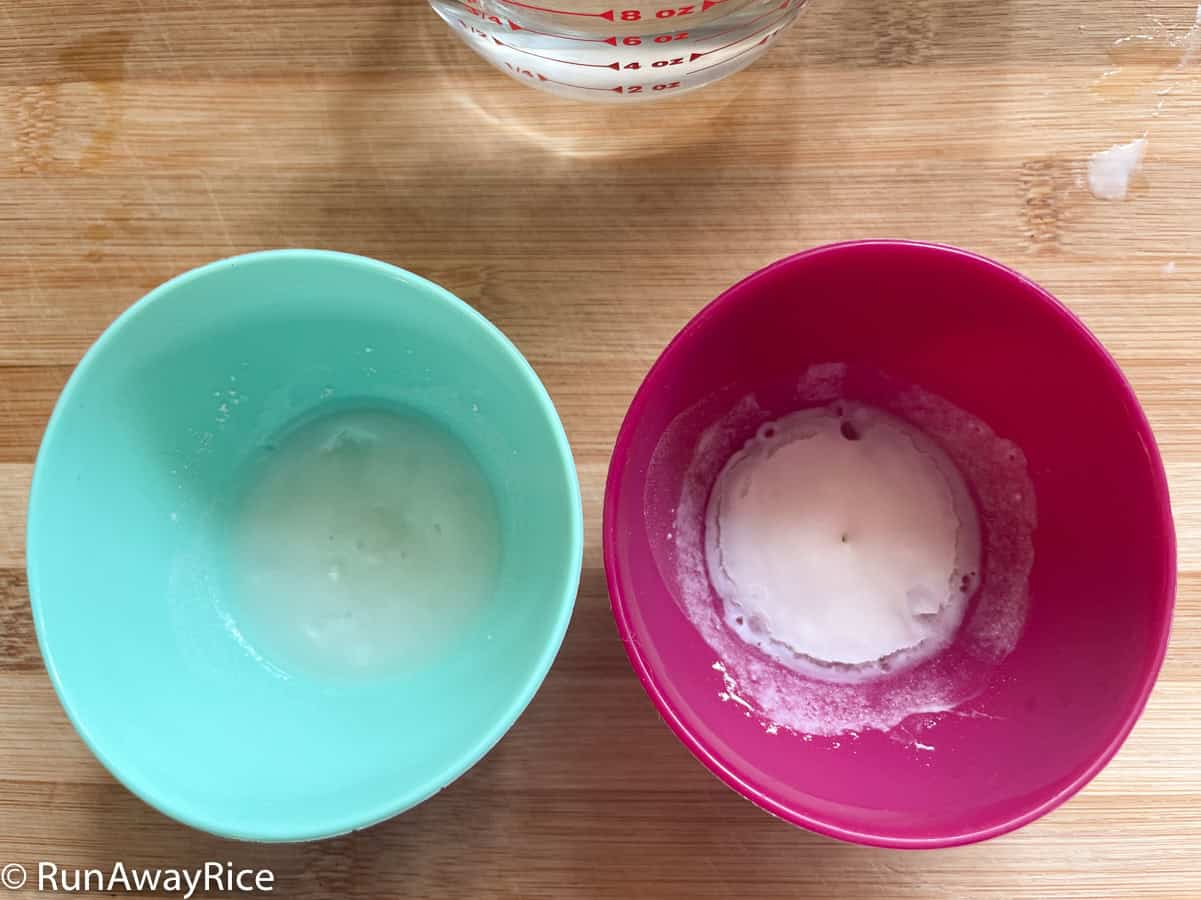
The Big Reveal!
✨ Glutinous Rice Flour: After heating, this one turns gooey, stretchy, and sticky, like slime! This sticky, chewy texture is exactly what gives treats like Sticky Rice Balls in Ginger Syrup (Che Troi Nuoc) and Sticky Rice Dumplings (Banh It Tran) their irresistible chew.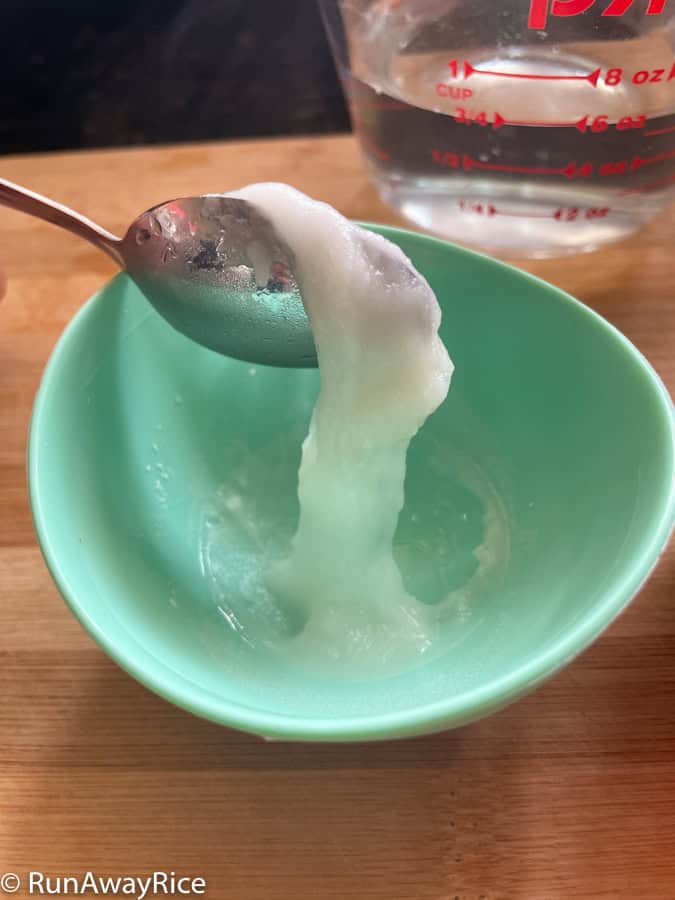
✨ Rice Flour: The other bowl will look cakey, crumbly, and soft like cooked batter. It doesn’t get sticky or stretchy. This flour is great for making Savory Steamed Rice Cakes (Banh Beo) and Savory Rolled Cakes (Banh Cuon).
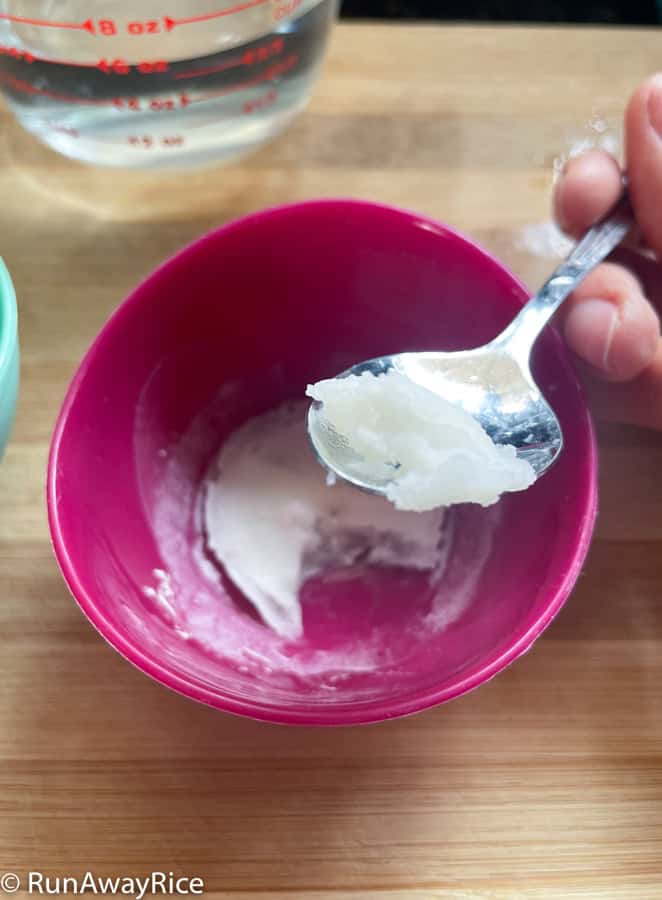
Once you’ve seen the difference, you’ll never mix them up again!
Why This Works
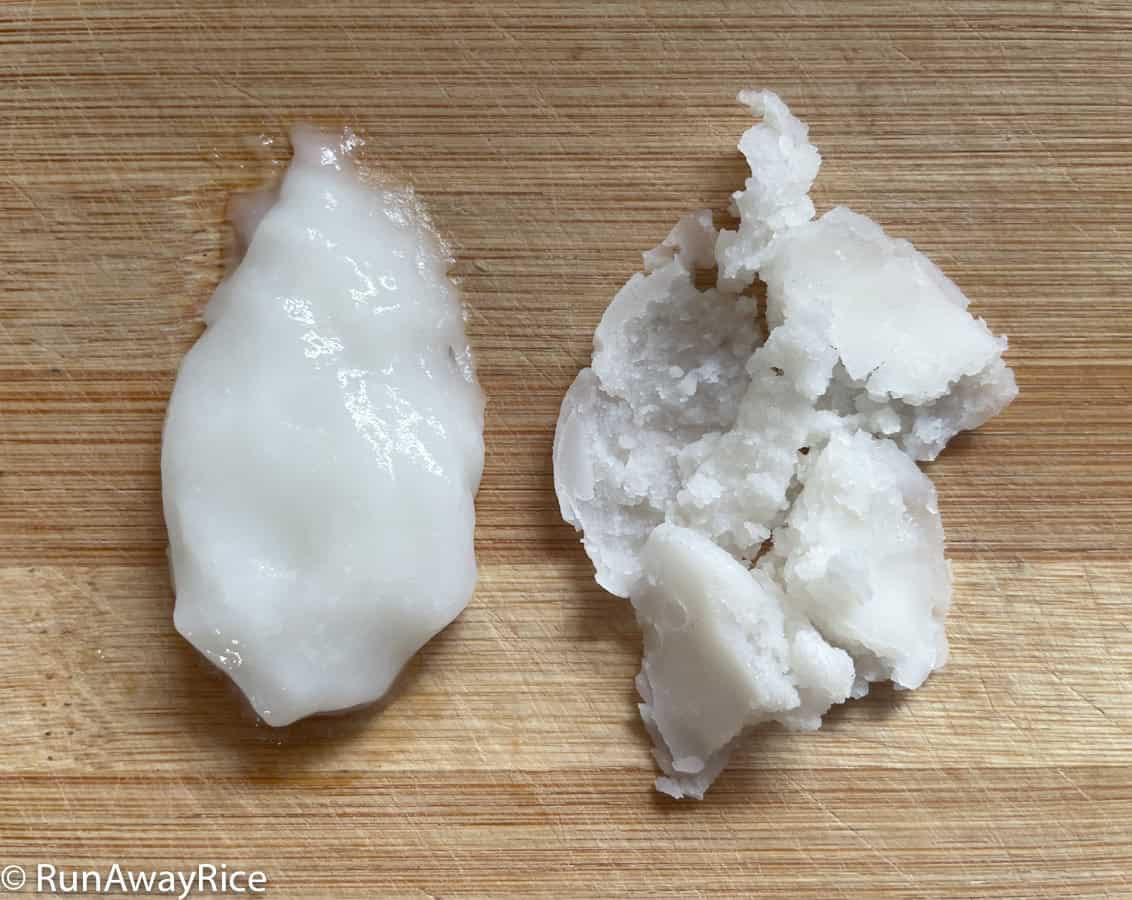
The secret lies in the starch composition. Glutinous rice flour is made from sweet rice (also called sticky rice), which contains mainly amylopectin, a starch that creates elasticity and stickiness. Rice flour, made from regular long- or medium-grain rice, contains amylose, which gives a firm and non-sticky texture. So while both come from rice, their chemistry is quite different and that’s why your recipes turn out completely differently depending on which one you use.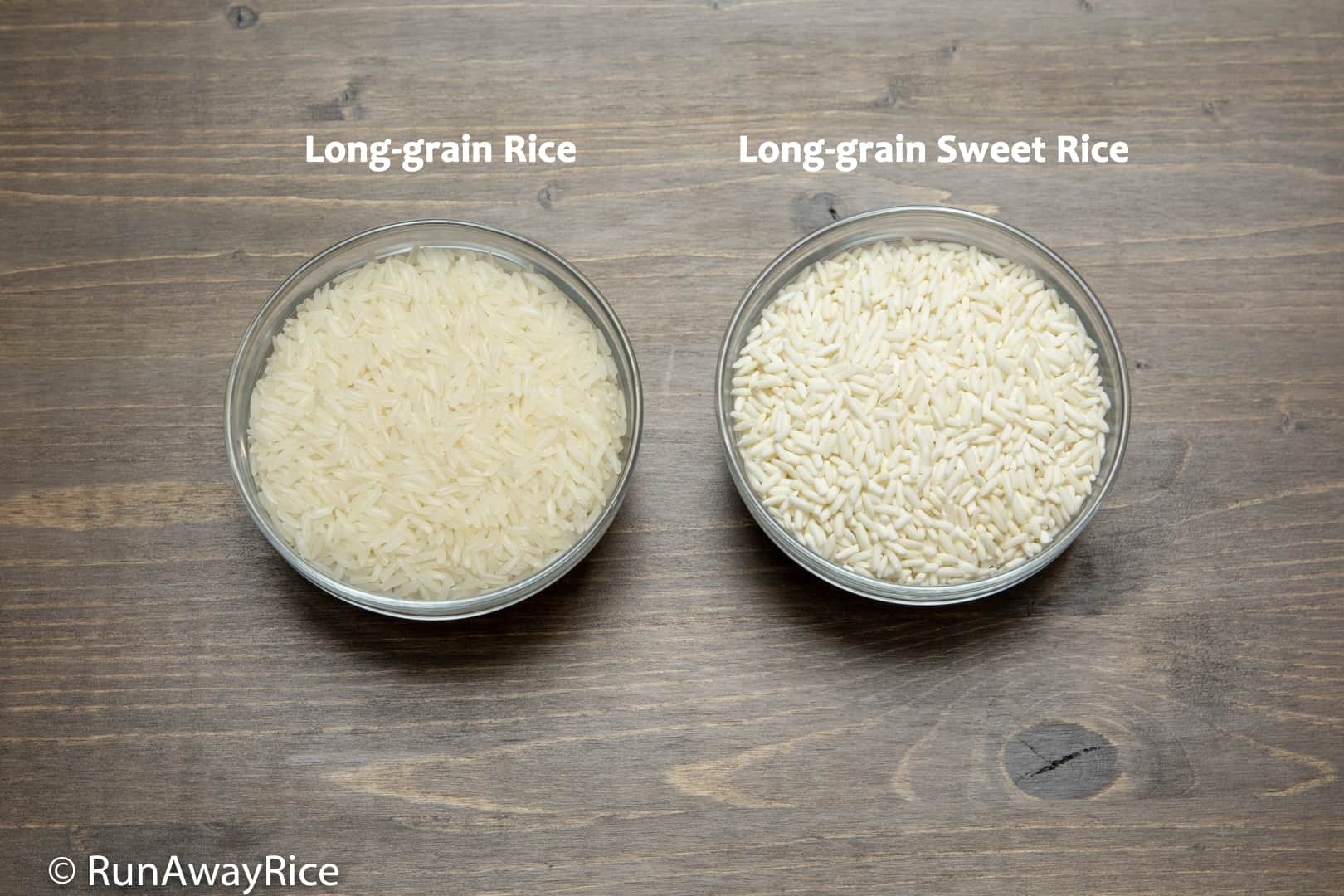
Fun with Kitchen Science
This little experiment is not only helpful but also really fun to watch! It’s a great way to teach kids (or curious grown-ups) about how starches behave. And once you’ve identified your flours, you can get cooking!
Try one of my favorite recipes using glutinous rice flour like Sesame Balls (Bánh Cam), or use rice flour to make Steamed Coconut Rice Cakes (Banh Duc).
Check out these delicious recipes in the links below:
Savory Steamed Rice Cakes (Banh Beo)
Sticky Rice Balls in Ginger Syrup (Che Troi Nuoc)
Savory Rolled Cakes (Banh Cuon)
Sticky Rice Dumplings (Banh It Tran)
Steamed Coconut Rice Cake with Toasted Shrimp Flakes (Banh Duc Tom Chay)
Next time you’re faced with two mystery flours, don’t panic, just play kitchen detective! This simple test will save you from any recipe mix-ups and give you a fun, hands-on way to learn more about your ingredients.
Have you ever accidentally swapped these two flours in a recipe? (Don’t worry, I have too!) Share your kitchen stories in the comments below, I’d love to hear them. Thanks for stopping by!

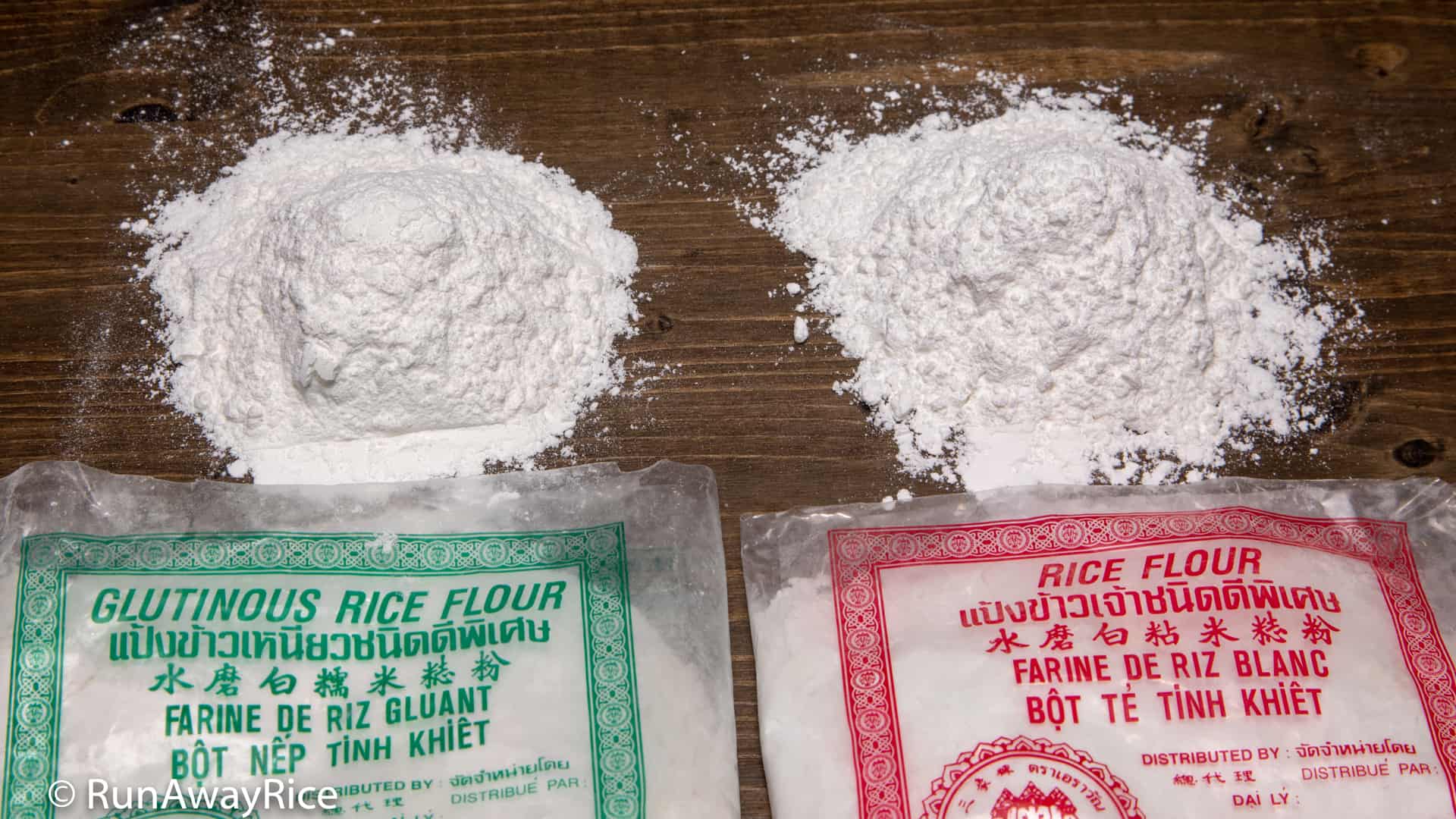
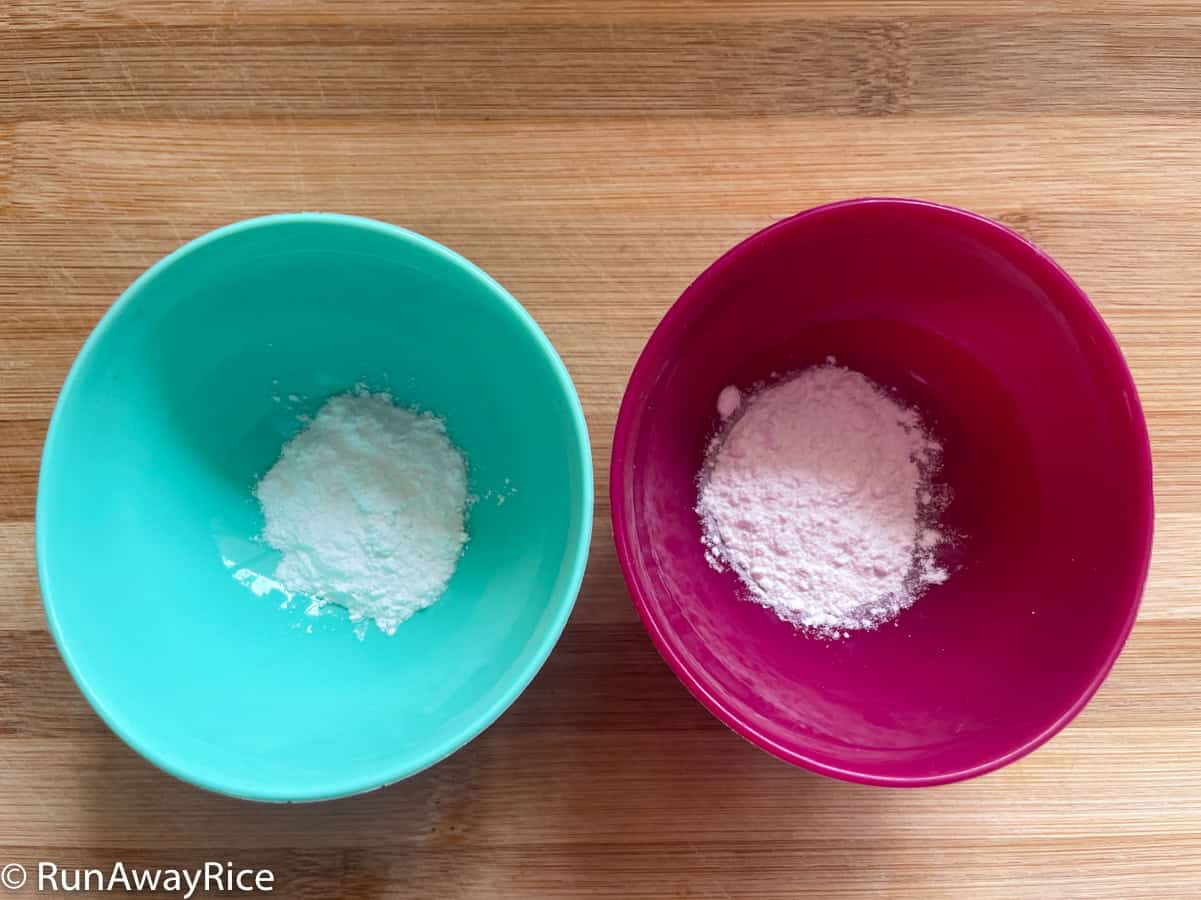
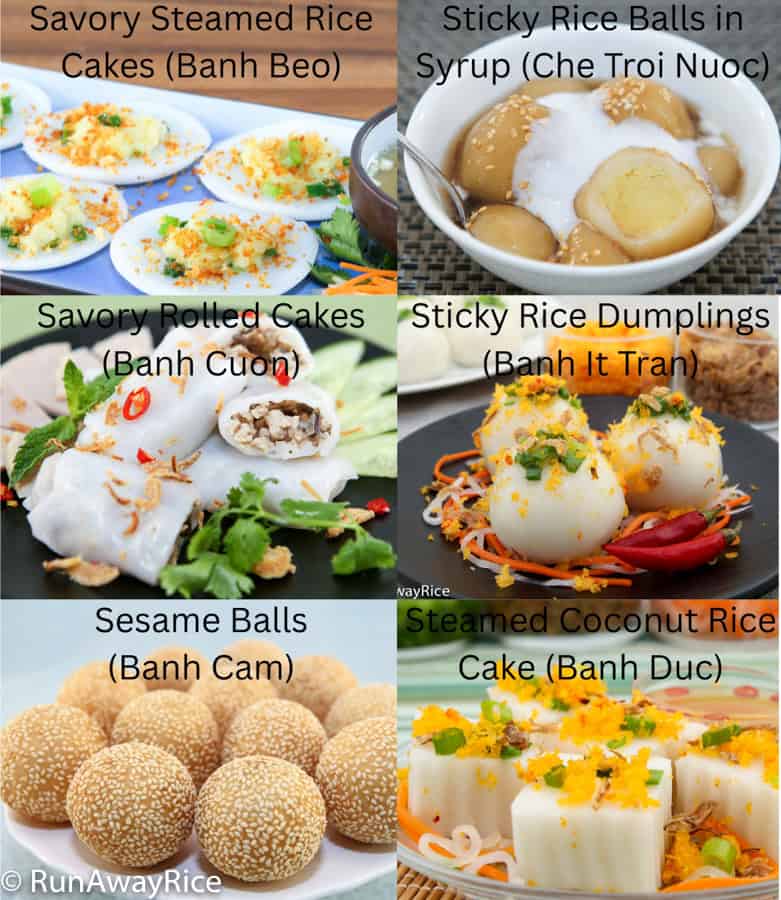
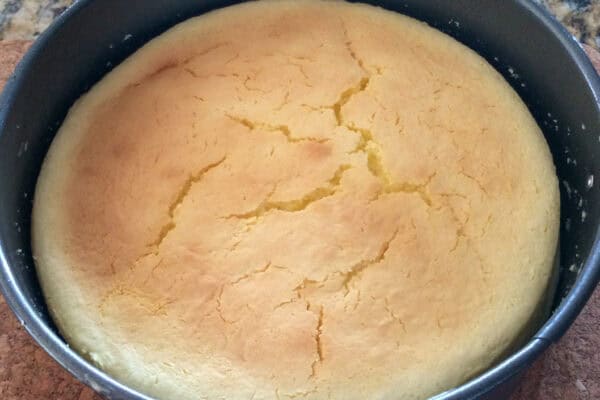
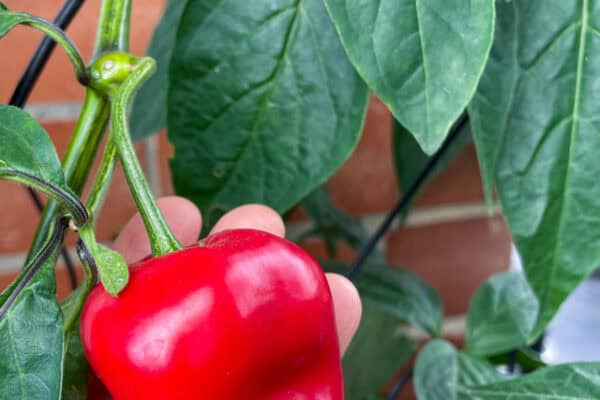




























This quick test to differentiate rice flour and glutinous rice flour is super helpful. It clears up a lot of confusion for home cooks like me trying new recipes.
Hello,
I am so glad you enjoyed the post and found the test helpful. Thanks for stopping by!